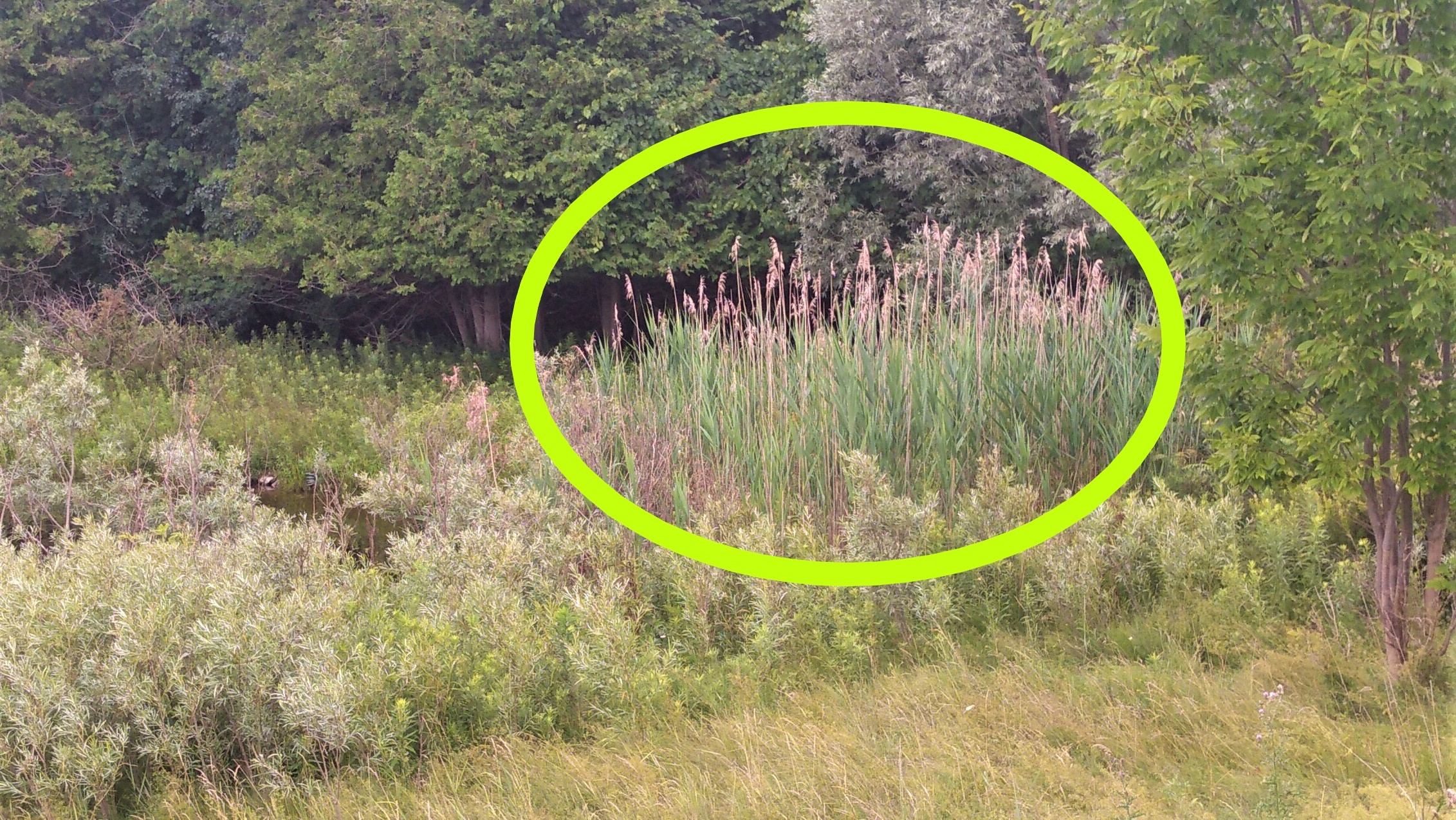You've Reached:
Invasive Phragmites

They may not look like much, but the plants circled in the picture above are actually invaders! They come from Europe, where they are used to make thatched roofs, feed livestock like sheep or cows, and make cellulose - a raw material that gets manufactured into everything from paper to plastic, food thickeners and even explosives. No one is really sure how they got here, but it is likely they were brought by ships over the Atlantic around 1800.
Here, across southern Canada and down into the US, they drastically alter our natural wetlands. Their roots release toxins into the water and soil that kill other native plants, allowing the reeds to spread even more. Aside from the toxin, these invasive plants grow so close and tight together that there’s no room left for other plants to take root. It also seems that a lot of wetlands animals don’t like to live in them or eat them. As they spread, it becomes harder for these animals to find food and shelter.
You can help stop the spread of these Phragmites and other invasive species by staying on the path and keeping pets on a leash. If you happen to come into contact with them, take care that no seeds, plant parts, or mud leave the area with you by travelling on your clothes, carried items, footwear, pets or vehicles. For more information visit Ontario’s Invading Species Awareness Program website.
http://www.invadingspecies.com/invasive-phragmites/
Take the Quiz

